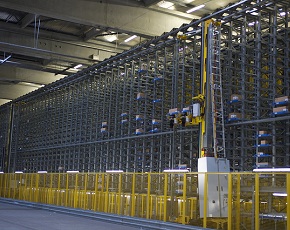Switzerland's largest retailer is working with IBM to use business analytics to turn its refrigerated warehouses into part of a future smart electricity grid in the country.
Migros, the Swiss supermarket, is part of a project involving electricity utility BKW and national grid operator Swissgrid, which aims to use the warehouses as a buffer to cope with the unpredictability of renewable energy sources.

Unlike conventional fossil fuels, generating electricity from wind or solar power is unpredictable and varies according to the weather. For energy providers, this means they will need to have the flexibility to balance supply and demand in new ways.
Switzerland has ambitious targets to grow its use of renewable energy, and will need to find ways to create a smart grid that can deliver that balance.
Migros is a huge consumer of electricity – the whole group uses more energy than the entire Swiss city of Bern, according to its head of energy purchasing, Roland Stadler.
"Harmonising electricity consumption with availability of power supply is very interesting," he said.
Read about the UK's smart grid plans How smart is the Smart Metering Implementation Programme? Big data: Utilities rise to the smart meter challenge Smart meter and smart grids: security risk or opportunity? Security and safety fears hit smart metering programme Smart energy meter project IT raises Public Accounts Committee concerns Intellect leads IT sector's involvement in SmartGrid GB smart metering project Think Tank: What are the security implications of putting a smart meter in every UK home? Apps will make the smart grid worthwhile
Acting as a buffer would help reduce Migros's energy costs, as its provider would pay to gain the flexibility it needed.
The firms have formed a consortium, called Flexlast, which is working on developing analytical models that predict the energy needs of a warehouse, and allow the electricity provider to divert resources elsewhere at times of lower consumption.
In simple terms, when the wind blows and the sun shines, there will be abundant energy that Migros can use. When the weather changes, the utility firm can direct resources elsewhere, knowing that one of its biggest customers will continue to operate with a reduced supply.
"Migros will be able to balance production and consumption more locally," said Doug Dykemann, a smart grids scientist at IBM's Zurich research labs.
BKW project manager Wolf-Christian Rumsch added: "Besides demonstrating the technology behind the project, we also hope to illustrate how industrial energy consumers can re-engineer their process for optimal power system integration."
A 2,000m2 refrigerated warehouse needs to maintain a temperature of -26°C. When goods are delivered, they have to be frozen to this temperature – and this process is the heaviest load on energy supply. The cooling engines used require 3MW of power. What's more, bringing a warehouse back to room temperature for maintenance takes more than two weeks.
Energy providers will need to have the flexibility to balance supply and demand in new ways when tapping into renewable energy sources
IBM is modelling data supplied from logistics and scheduling systems, sensor data in the warehouse, real-time energy supply information, and even weather forecasts to derive a power use schedule that would be able to flex the energy needed from the grid to balance the use of renewables.
The project aims to have a live version of the system running early in 2013.
IBM has also looked into how other electrical consumers can be used to buffer the irregular production of renewable energy, and has demonstrated how electric vehicles, appliances and homes can contribute to a future smart grid.
"Now with Flexlast, we can add cold storage warehouses to the mix, broadening the landscape of techniques we can use to balance supply and demand on the grid," said IBM smart grid researcher Dieter Gantenbein.





